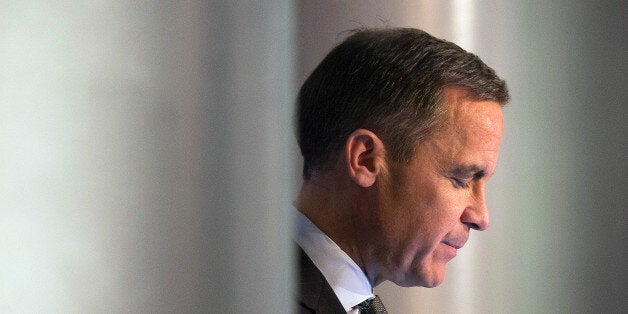
Mark Carney is set to overhaul his flagship forward guidance policy on interest rates tomorrow after just six months as Britain's unemployment rate fell sharply.
The Bank of England governor has already admitted in a speech to business leaders in Davos last month that the policy linking interest rates to unemployment needed to ''evolve'' - signalling that this would begin at its quarterly inflation report tomorrow.
Under the guidance, the Bank has said it will not even consider a hike in rates from their current low of 0.5% until the rate of joblessness has fallen to 7%, but this now looks likely to be achieved much more quickly than previously thought as the recovery speeds up.
When the policy was first announced in August, the Bank did not expect the unemployment threshold to be achieved until 2016.
Latest figures showed the jobless rate had already fallen within a whisker of the target - to 7.1% - which has brought forward City expectations of an interest rate hike, with some predicting they will rise as early as this year.
Economists expect the Bank's guidance will now be tweaked to take into account a broader range of factors to reassure that rates are not set to rise any time soon.
The policy was launched to give households and businesses confidence that rates will stay low as the recovery takes hold.
While the Bank has stressed unemployment falling to 7% will not automatically trigger a rate rise, the guidance has proved less reassuring as joblessness has plunged, prompting policymakers to reiterate the message that they are in no hurry to increase the cost of borrowing.
Last week, the latest monthly decision of the Bank's Monetary Policy Committee marked five continuous years that rates have remained at the record low of 0.5%.
In his Davos speech last month, Carney said the recovery had ''some way to run'' before any increase could be considered.
The introduction of guidance, marking a shift in Threadneedle Street's policy, was overseen by Carney shortly after he began his tenure as governor last summer. Its latest modifications are likely to be seen in some quarters as a test of his credibility.
Experts have speculated that broadening out the terms of the policy could include taking into account factors such as real wages - which despite the recovery are still falling as weak pay growth lags behind inflation.
Jonathan Loynes of Capital Economics said while the changes could help tackle the problems associated with excessive dependence on one single indicator - unemployment - they could make it more difficult to give a ''clear and straightforward message''.
However, he said a recent fall in inflation and slight slowing of economic growth in the fourth quarter of 2013 should make it relatively clear that interest rates ''are going nowhere for some time yet''.
Inflation has now fallen to the Bank's target of 2% for the first time for more than four years, easing the pressure to raise rates, while the latest growth figures showed UK output rising by 0.7% in the fourth quarter against 0.8% in the previous three months.